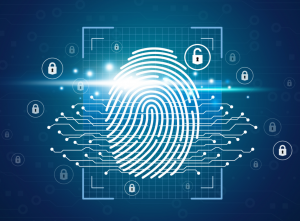Imagine this scenario: a CEO, CIO, CTO, CISO walk into a bar…
The CTO has heard about cocktails that go beyond the “pour and shake,” and asks the bartender what they know about molecular gastronomy to take their drink to the next level. The CIO considers the CTO’s choice, weighing the risk versus reward of trying something new. The CEO orders a Long Island iced tea – a bold, ambitious, and challenging choice that incorporates a bit of everything, but they know in their gut it is the right decision and direction. The CISO orders a water.
Why? Because somebody always must be the designated driver, taking the responsibility to protect the integrity of the entire team and organization. They are the eyes and ears, proactively anticipating what may happen, knowing the onus is also on them to respond reactively to anything that may occur.
While in a bar this may mean things getting a bit rowdy, in the security operations center (SOC) it means an entire business can be compromised, creating a catastrophic spiral of events that can have massive impact and implications for customers, not to mention severe cost to the business.
Needless to say, the consequences are more extreme than a hangover. They remain always-on in the mind of the CISO – and this isn’t the only challenge the role faces. It is no secret in the security industry that elevating the role of the CISO to carry equal weight and footing as the rest of the executive or c-suite has been an uphill battle. While progress has certainly been made, there is always more work to be done to thwart and combat the seemingly never-ending barrage of threats that continue to emerge.
Navigating ‘Whiskey’ Business
Nearly every industry has been impacted in some manner by the events of 2020 and so far, across 2021. Attacks have increased and promise to become even more plentiful, more sophisticated. Enterprises and organizations have struggled against unforeseen challenges, yet at the same time have faced increased pressure and demand to modernize, digitize, and transform.
We’ve seen that with today’s distributed workforce, cloud usage has increased, and enterprises are tasked with maintaining efficiency across even more endpoints – and keeping those endpoints safe. This has presented a tremendous opportunity for CISOs to maximize their full power and impact by proving to be the clear connection and catalyst merging technology and business.
This means today’s CISOs may need to do more with less, convincing fellow c-suite members that integration is more important than introducing new toolsets, applications, or solutions at a time when enterprises may be more vulnerable or susceptible to risk due to staffing constraints or conflicting priorities across the business. With the amount of change rapidly occurring across enterprises, CISOs have an increased impetus, responsibility, and opportunity to show enhanced value to the organization. They must continue to shift the perception that security can be a barrier to business efficiency and success and instead show that security is more than a compliance function, but a true business enabler.
One Part Security, Two Parts Business
In order for CISOs to be successful, they must stay steadfast in aligning with the CIO, CTO, CEO, and all the way up to the board. They can do this by showing up with data to demonstrate the impact (both past and potential) made to business, including proof points related to vendor sprawl and legacy technologies (and any associated cost or complexity) as well as insight into threats that were prevented and the damage they could have caused.
CISOs will also need to continue the shift on their end, adapting their role and approach from waiting for a compromise to happen to understanding threat actors, their common techniques, and how to get ahead. In short, they need to become what they fight against – proactive threat management means you need to think like a threat actor. Ideally, the CISO should not only be able to articulate business risks and impacts – they also need to show foresight and maturity to suggest controls or process improvements that can improve business efficiencies because security is built in to protect and enable this agility.
Once CISOs truly understand the business side of an organization and can not only relate but prove this value to the rest of the c-suite, they can be viewed as more of a strategic partner. With this line of thinking, the SOC can move from being viewed as a cost center to being a more deliberate and proactive part of the enterprise facilitating business success.










